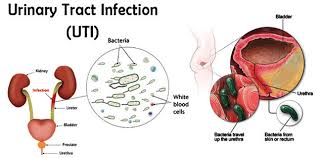Prevalence, Biofilm Formation, and Antimicrobial Resistance of Uropathogens Isolated from Patients with Urinary Tract Infections in Misurata, Libya
DOI:
https://doi.org/10.69667/rmj.25403Keywords:
Urinary tract infections (UTIs), Uropathogens, Biofilm formation, antimicrobial resistance (AMR), Multidrug resistance (MDR), Misurata.Abstract
Urinary tract infections (UTIs) are among the most prevalent bacterial infections, affecting all ages and ranging from uncomplicated cystitis to severe pyelonephritis. This study was conducted to determine the prevalence of uropathogens causing urinary tract infections (UTIs), their capacity for biofilm formation, and their antimicrobial resistance patterns in Misurata, Libya. A cross-sectional study was conducted at two medical centers in Misurata. A total of 40 patients clinically diagnosed with UTIs were included. Patient ages ranged from 5 to 88 years, and the majority of them were female (80%). All isolates were identified using standard microbiological techniques. Identified bacteria were subjected to biofilm detection using the Congo Red Agar (CRA) method, and antimicrobial susceptibility testing was performed using the Kirby-Bauer disk diffusion method. Staphylococcus aureus (37.5%) and E. coli (32.5%) were the most predominant bacteria among UTI patients, followed by Coagulase-negative staphylococci (CONS) (15%), P. aeruginosa (7.5%), and Klebsiella spp. (5%) and Streptococcus spp. (2.5%). Biofilm formation on Congo Red Agar was observed for 40% of the isolates, with the highest frequency in P. aeruginosa (2/3; 66.7%), followed by S. aureus (8/15; 53.3%) and Klebsiella spp. (1/2; 50%). Antimicrobial susceptibility testing revealed variable resistance patterns, particularly to amoxicillin, nitrofurantoin, and ceftriaxone. Multidrug resistance was detected in several isolates, including E. coli, S. aureus, Pseudomonas spp., Klebsiella spp., and CONS. Although the sample size was small, the detection of pathogenic bacteria with biofilm-forming capacity and multidrug resistance represents a significant clinical concern and underscores the urgent need for ongoing antimicrobial resistance surveillance. Further studies with larger sample sizes and molecular characterization of resistance and biofilm-associated genes will provide deeper insight into the epidemiology of uropathogens in Libya and guide effective treatment strategies for UTI management.

Downloads
Published
Issue
Section
How to Cite
Similar Articles
- Salahaldin Alfurjany, Shamsi Shamsi, Huda Ibrahim, Hanaa Al-Saidi, Ghada Al-Amin, Comparative Antifungal Efficacy of Ketoconazole and Nystatin on Chlamydospore Production in Candida albicans Isolated from Oral Lesions in Cancer Patients , Razi Medical Journal: Volume 1, Issue 4, 2025 (October to December)
- Milad Elshah, Mohamed Zeglam, Asmaa Abdeewi, In vitro Comparison of Fracture Toughness Among Three CAD/CAM Fixed Prosthodontic Materials , Razi Medical Journal: Volume 1, Issue 4, 2025 (October to December)
- Wesam Elsaghayer, Wafaa Babh, Ali Shagan, Misbah Elfagih, Esraa Obida, Ebrahim Elmahjoubi, Mohamed Bashagha, Mohamed Elfagieh, Sentinel Lymph Node Metastasis in Breast Cancer: The First Libyan Report with Hormonal Profiling and International Comparison , Razi Medical Journal: Volume 1, Issue 3, 2025
- Alaa ALMoula, Lana Mansor, Sarmad Almaula, The Importance of Probiotics in Human and Animal Life: A Review , Razi Medical Journal: Volume 1, Issue 4, 2025 (October to December)
- Fozia Aborayana, Fadila Elghadban, Souad Aboalqasim, Insulin-Dependent Diabetes Mellitus and the Pregnancy Outcomes: A Retrospective Study in the Pediatrics Department of Tripoli University Hospital – Tripoli, Libya , Razi Medical Journal: Volume 1, Issue 2, 2025
- Mariam Alqasser, Stroke Incidence and Risk Profile in Misrata City: A Retrospective Cross-Sectional Hospital-Based Study from Emergency Medical Records (2019–2020) , Razi Medical Journal: Volume 1, Issue 4, 2025 (October to December)
- Ahmed Atia, Mohamed Elfagieh, Razi Medical Journal: Launching a New Journal and Call for Paper , Razi Medical Journal: Volume 1, Issue 1, 2025
- Safa Salim, Abdullah Khaleel, Mohammed Alkrdoshi, Hamza Saadallah, Cytogenetic Study of Autism: A Systematic Review , Razi Medical Journal: Volume 1, Issue 3, 2025
- Asma Buzgeia, Nazik Hamad, Emaduldin Ateeyah, Mohamed Mohamed, Mohamed EL Fakhri, Utilizing Resources of Drug Information among Community Pharmacists in Benghazi and the Surroundings , Razi Medical Journal: Volume 1, Issue 2, 2025
You may also start an advanced similarity search for this article.








